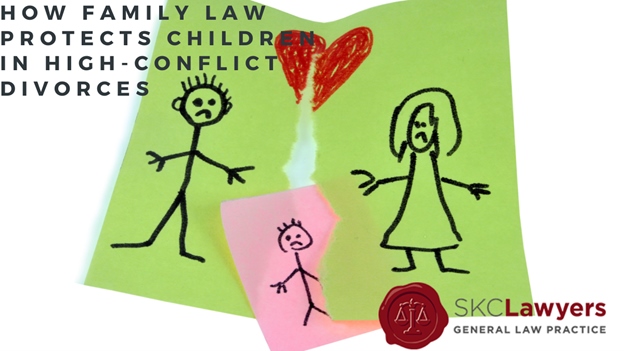How Australian Family Law Protects Children in Messy Divorces
High-conflict divorces are emotionally and legally complex, with children often caught in the middle of disputes. Australian family law is designed to prioritise the best interests of the child and reduce harm wherever possible. In cases involving family law child custody disputes, the courts and legal frameworks ensure that children’s rights, safety and wellbeing remain the central focus. Seeking early legal advice can help families navigate these challenges with clarity and confidence.
The Role of Family Law in High-Conflict Cases
The Family Law Act provides the foundation for protecting children in divorce proceedings. In situations of family law high-conflict divorce, the court always prioritises the child’s best interests over parental disagreements. Recent reforms, such as the Family Law Amendment Act 2024, have strengthened child-focused processes, ensuring that the emotional and physical wellbeing of children is at the forefront.
The court has broad powers to limit harmful exposure, reduce parental conflict in hearings and safeguard children through case management systems like the Lighthouse model, which screens for risks of family violence and abuse. These measures highlight the role of family court child protection as a key safeguard in highly contested cases.
Parenting Orders and Custody Arrangements
When parents cannot agree, the court issues parenting orders that outline custody, visitation and decision-making responsibilities. These orders are designed to create stability and reduce conflict by clearly defining parental roles. In child custody family law cases, courts may appoint an Independent Children’s Lawyer (ICL) to represent the child’s best interests.
The ICL investigates the child’s situation, gathers evidence and ensures the child’s voice is considered in decisions. Through structured parenting orders and professional legal representation, the court reduces the likelihood of disputes escalating and ensures that children remain safe and supported during and after divorce.
Safeguards Against Family Violence and Emotional Harm
Protecting children in divorce also means protecting them from exposure to violence, neglect or ongoing conflict. Australian law empowers courts to intervene where family or domestic violence is present. Risk screening tools identify potential dangers early, and courts may issue restrictions on parental contact if a child’s safety is at risk.
In addition, courts can manage the way evidence is presented to prevent children from being exposed to harmful material. By implementing these safeguards, family law child custody disputes are managed in a way that prioritises safety and reduces trauma. These protective measures ensure that children grow up in secure, supportive environments, even in the midst of parental conflict.
Protecting children in divorce is the core principle of Australian family law. From parenting orders to safeguards against family violence, every step of the process is designed to ensure stability, safety and wellbeing. For parents, understanding the role of family law high-conflict divorce protections is vital to making informed decisions that put children first.
Concerned about how your divorce may impact your children? Contact SKC Lawyers today for practical advice on parenting orders, custody arrangements and family court child protection in high-conflict cases.

